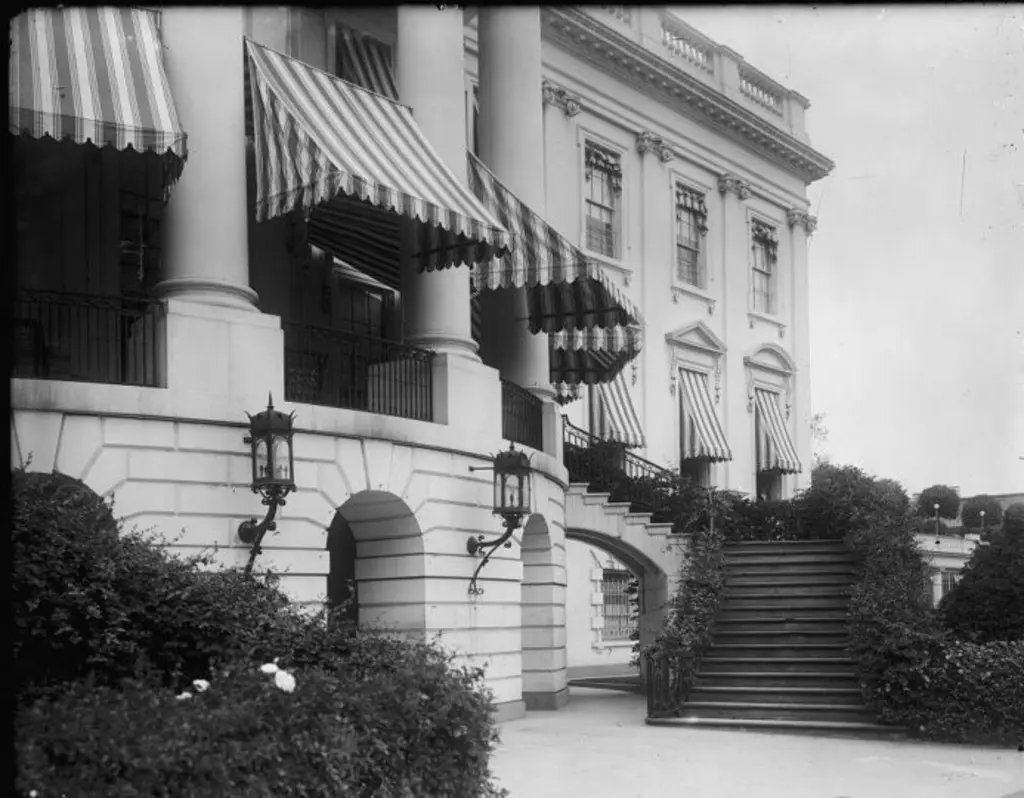We designed shade out of our cities. We can design it back in
As I write these words, a heat wave is sweeping through Europe. Last month, a heat wave swept through the East Coast. Next month, a heat wave might sweep through the Middle East, or South Asia, or North Africa.
As temperatures continue to reach record highs—and climate change increases the likelihood of heat waves—the sun has become foe, and shade has become king. Shade can lower the ambient temperature of the air by as much as 15 to 20 degrees Fahrenheit. It can cool surfaces by as much as 45 degrees.
But where is it?
Ten thousand years ago, more than half of the land on Earth was shaded by tree canopies. Today, after millennia of deforestation, agriculture, and urbanization, that number has dropped to just 30%. The problem is particularly dire in cities: A recent map by UCLA and the nonprofit American Forests revealed staggering “shade deserts” in almost every major urban region in the U.S. According to journalist and author Sam Bloch, this dearth of shade is by design.
In his new book, simply titled Shade, Bloch argues that the absence of shade from our lives is not an accident. “Shade has been deliberately designed out of our environments,” he tells me on a recent phone call. “Those decisions may have made sense in the past, but we are rapidly moving into a new world where sun protection is going to be as important as sun access.”
Shade as old as time
Humans have sought shade for as long as we have lived under the sun. “Forget palm trees and ponds,” Bloch writes. “In ancient Mesopotamia, cities were the real oases.” Four thousand years ago, in places where temperatures could soar up to 130 degrees, Sumerians used city walls for shade. They built deep, narrow streets and packed houses close together. Unlike modern cities, which are laid out along the cardinal directions, Sumerians also oriented their cities diagonally, which offered equal amounts of sun and shade on both sides of the street.
In his book, Bloch mentions the work of Mary Shepperson, a U.K. archaeologist who specializes in urban archaeology of the Middle East. After modeling the sun’s daily and seasonal paths over Mesopotamian cities, Shepperson found that the orientation of streets, their narrowness, and small protrusions like vertical rooftop parapets and horizontal eaves likely made for pleasant, shaded cities.
The “wisdom of shade,” as Bloch calls it, was known to the Syrians, Phoenicians, and Persians. Later, it was embraced by the Greeks and Romans, and eventually exported by the Islamic caliphate to modern-day Spain and Portugal. But that is the extent it traveled. Europeans had their own beliefs about what makes a healthy city, and they exported those beliefs to the New World. “In temperate climates, the sun was their friend, not their enemy,” Bloch writes. “They had little use for shade.”
How we designed shade out of our cities
If shade is as old as time, so are our preconceptions against it. Over 2,000 years ago, the Greek philosopher Onesicritus taught that shade stunted growth. As Bloch points out, our prejudice against shade even shines through in the language we use: When something is dubious, it’s shady. When we feel offended, we take umbrage.
Americans, perhaps more so than others, take particular umbrage at shade. “We think shade is yucky. It’s for damp corners and fetid ponds,” Bloch writes. This goes back to the early colonizing days. When Europeans arrived in modern-day America, they brought with them a “deep and abiding fear of forests,” which were considered pagan and unholy. In 1771, an English patrician proclaimed “a garden in a street is not less absurd than a street in a garden.” Or as the author puts it: “A city dweller who planted trees in their front yard was just another country bumpkin.”
Many factors further contributed to the downfall of shade, but perhaps the most significant of them is our ancestors’ fear of tuberculosis. Early research from the 1900s showed that bacteria could be killed with sunlight. This understanding birthed a fixation for sunlight that translated to some of the most famous modernist buildings of the time, including Alvar and Aino Aalto’s Paimio Sanatorium in Finland.
In the U.S., urban planners introduced zoning that called for “setbacks.” They wrote “solar codes” into urban plans. They widened roads (which also helped cars thrive) and carved out paths for sunlight to reach deep into the streets. “This fear of tuberculosis has driven so much of our urban design,” Bloch tells me.
The approach trickled down to buildings, as architects clad office buildings and homes with large expanses of glass. Le Corbusier declared glass the foundational material of modernism. Ludwig Mies van der Rohe famously said, “It’s up to the engineers to find some way to stop the heat from coming in or going out,” about his Farnsworth House.
Glass, we know now, is notorious for trapping heat. But it has survived as a material of choice, thanks to another notorious invention: AC. Modern air-conditioning was invented in 1902 by American engineer Willis Carrier, who designed a system to control humidity at a printing plant in Brooklyn, New York. Suddenly, external shading systems like brise-soleils, awnings, sun sails—systems that have been used in European cities for centuries—were dismissed as costly add-ons that could never match the level of comfort provided by cool air being fanned through your house. Case in point: After the Truman administration renovated the White House in the 1950s—installing mechanical cooling in the process—it foolishly took down the stripy summer awnings that once kept it cool.
Air-conditioning revolutionized cooling around the world, but as Bloch writes, “it came at a cost.” It distanced us from nature and trapped us inside climate-controlled boxes. It lowered our comfort level and our defenses. Even worse: It exacerbated the heat problem it’s supposed to solve by sucking the hot air from our houses and expelling it in our cities. According to computer simulations from Paris and Phoenix, the waste heat from AC units makes the surrounding air about 2 to 3 degrees warmer. “All this happened when we turned our backs on shade,” Bloch writes.

How we can design shade back into our cities
So, how do we learn to love shade again? The good news is that there’s no need to reinvent the wheel. In his book, Bloch highlights examples from cities all over the world. In Bologna and Singapore alike, people can walk under miles of covered sidewalks that are carved out of the ground floors of buildings. Italians call them portici (porticoes). In Singapore, they’re known as “five-foot ways.”
In Seville—where seats at the bullring cost two to three times more when they’re in the shade—practically all windows are shaded by roller blinds, or persianas de esparto, which are threaded grass curtains that Sevillanos drape over their balconies. Every spring, the Spanish city also installs toldos over streets and plazas. These “sun sails” have been used for so long (over 500 years) that they have become a proud tool in the city’s shade vernacular.
Naturally, every city’s “shade tool kit” will vary based on its climate policy, geographic and socioeconomic conditions, and affinity for design-led solutions. Barcelona has set up “climate shelters,” while Dallas has been planting thousands of trees. And Los Angeles has been coating its streets and roofs with solar reflective paint.
Since the early 2000s, architects have been pushing for more passive houses. But as Bloch writes, the incentives largely benefit the future occupants, whose energy bills are lowered, not the developers, whose bottom lines remain the same whether or not a building is climate-resilient. This “split incentive” problem has notably hampered construction and can only be solved if cities implement stronger building codes and grant developers stronger financial incentives. (Building a passive house typically costs around 10% more.)
Perhaps it would help shift our perception of shade if cities classified heat as an environmental hazard, like water or air pollution. The Clean Water Act limited what industries and farms could dump into waterways. The Clean Air Act required power plants and factories to monitor, control, and report their emissions. A similar requirement for heat might help us take more actionable steps toward heat mitigation.
“If we ever agree that heat is a threat to our freedom and happiness, then we might also decide that shade, our defense against it, is an inalienable right,” Bloch writes. (Even if studies have shown the cooling benefits of shade, Bloch says there is no single, widely accepted index to measure shade’s thermal impact.)
For Bloch, the problem with shade access isn’t necessarily technological but psychological. Some of the experts he interviewed for the book are even calling for a life “after comfort”—where architecture is made more porous, and where we can learn to live with heat. Studies have found that people who are forced to deal with heat can tolerate it more than those who can escape it.
In the U.S., the ideal indoor temperature ranges between 73 and 78 degrees. In Ouagadougou, Burkina Faso—where AC is virtually nonexistent—studies say that the Burkinabe people’s ideal temperature is closer to 86. Similar studies have shown that people in Marrakech, Morocco, are more likely to feel comfortable than people in Phoenix, Arizona, despite a similar climate.
Bloch knows that the cooling effect provided by shade is never going to replace the icy blast of AC. “Even on a thermodynamic level, it’s not doing the same thing,” he tells me. “But if we can adjust our expectations as to what comfort really is, we might be able to be more tolerant of shade as a viable solution.”

